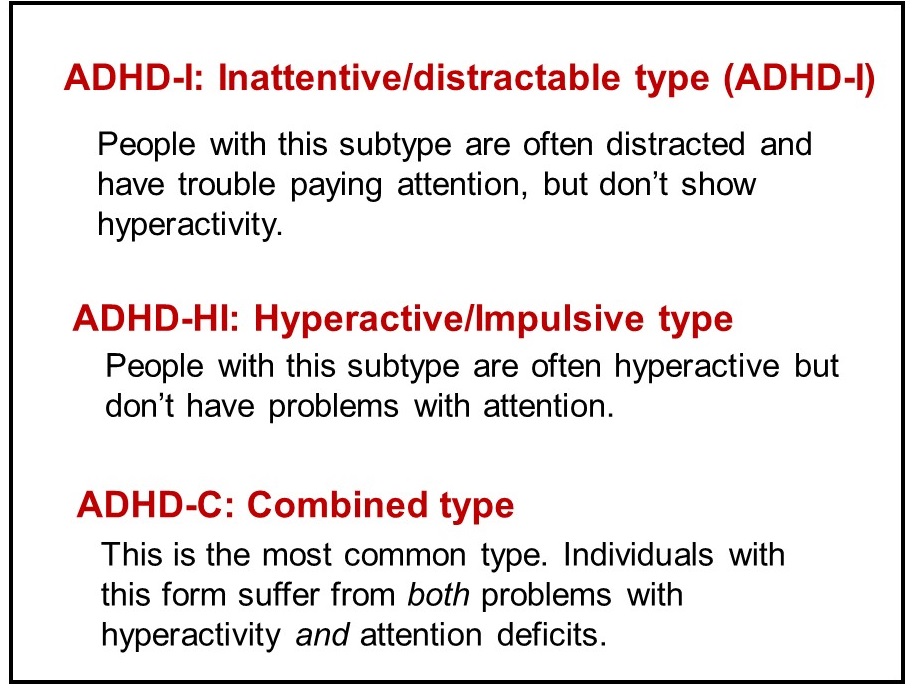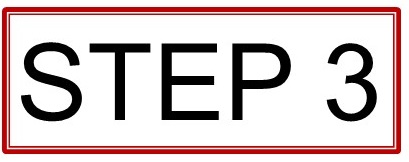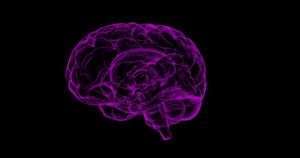Diagnoses of ADHD, attention deficit hyperactivity disorder, have been growing substantially in kids, and in adults, over the last two decades. It is hard not to think of it as a fad. After all, it is tempting to think that an inability to control our kids has a medical diagnosis behind it. Not only that, but the drugs used to treat ADHD are easily abused, and big pharma has absolutely taken advantage of that.
But thinking this way about ADHD is dangerous!
Not too long ago, we used to label people with clinical depression as lazy people who didn’t want to get off the couch. Kids with learning disabilities were labeled unintelligent. Now ADHD is being cast as a scapegoat for bad parenting. Meanwhile, people with ADHD are suffering. They sometimes go their entire lives not understanding why they can’t seem to focus and achieve simple tasks. But they are often reluctant, or even embarrassed, to seek treatment.
ADHD is absolutely a real and physical disorder. Mental health conditions are diseases. Brain chemicals are powerful things, and a slight imbalance can substantially change a person’s ability to function in a healthy way.
Instead of writing these disorders off, we need to become educated parents. That way, we can be prepared to recognize the disorder when it is truly a problem, and also when it is really not.
Some important things to know about ADHD are:
- You can have ADHD even if you’re not hyperactive.
- This disorder can seriously impact motivation and memory.
- The diagnosis of ADHD is a long, and complex process.
- Even adults can have undiagnosed ADHD.
- And real cases of ADHD are, in fact, increasing. But why?
Let’s start with a little bit of history
When the disorder was recognized in 1980, it was given the official name of ADD, Attention Deficit Disorder, which was later changed to ADHD, Attention Deficit Hyperactivity Disorder. In the beginning, hyperactivity was considered to be a main symptom of the disease. But it soon became clear that while some with this disease are hyperactive, others are simply lethargic, socially awkward, and/or have difficulty completing tasks. Ultimately, ADHD was split into three subtypes:

How do I know if I or my child has ADHD?
Because of its complexity, ADHD is actually quite difficult to diagnose, and especially difficult to differentiate from other mental health disorders. ADHD and other disorders can go hand-in hand. For example, adults with ADHD are also more likely to suffer from clinical depression. In children, ADHD can look a lot like mood disorders, learning disabilities, and autism spectrum disorders.
When doctors diagnose patients with mental disorders, they usually refer to the Diagnostic and Statistics Manual of Mental Disorders. This is the authoritative guide that directs both doctors and researchers around the world to define mental disorders, and detect them in patients. According to this guide, a child must exhibit 6 of the following symptoms to be diagnosed with ADHD:
- Short attention span
- Hyperactivity
- Impulsiveness
- Fidgeting
- Disorganization and difficulty prioritizing
- Poor time management
- Frequent mood swings
- Forgetfulness
- Difficulty multitasking
- Inability to control anger or frustration
- Trouble completing tasks
- Distracted easily
- Difficulty taking turns
But here’s the thing – just because a patient exhibits 6 of these symptoms doesn’t mean that ADHD is a definitive diagnosis. These symptoms are often normal in young kids.
For a diagnosis of ADHD, not only must kids display these symptoms, but they must do so continuously for at least 6 months. Symptoms should be present in multiple contexts (e.g. at school and at home), and the child must be at a developmental stage when those symptoms are not normal.
Diagnosing adults is even more difficult, because the symptom guide was designed only for children. There is not a guide out there for adults yet, so doctors have to improvise.
So how DO doctors solve the puzzle?

If you visit a doctor and he/she hands you a diagnosis of ADHD after a visit that lasted only a few minutes long, you should question the diagnosis. Making a true diagnosis of this disorder takes some serious analysis of not only your child’s current state, but his/her past state, your family history, and assessments from teachers, other caregivers, and friends. Here are some commons steps to a real diagnosis of ADHD:

STEP 1: Your doctor will likely conduct an extended interview. You’ll describe your child’s symptoms in detail, explain family history, and even provide stories about how your child functions in school, interacts socially, and completes tasks. Sometimes doctors will even ask to speak with family and friends to get a better idea of the scope of any symptoms that are present.

STEP 2: You and your child will often be asked to complete an ADHD rating scale. There are several of these that your physician can choose from. They range from 10 to over 100 questions, and help to determine which symptoms of ADHD are present, and in which environment your child expresses them. Some of these scales also assess for other disorders at the same time in attempt to rule them out.
For more information on these scales, including some that you can download, go here.

STEP 3: Computer tests called Continuous Performance Tests (CPTs) can challenge the patient to sustain attention to complete the computer tasks. Studies show that these tests are good additions to the ADHD scales to pinpoint whether ADHD is an accurate diagnosis.
All of this information, together, can help a doctor to determine whether ADHD is a likely diagnosis for your child.
Are there physical signs of ADHD in the brain?
Historically, the physical issues underlying ADHD have been something of a black box. Scientists and doctors still don’t have a complete understanding of what causes it. But here’s what they do know:
- Multiple genetic and environmental factors likely interact early in a child’s development (even before birth) to make the brain susceptible to ADHD.
- ADHD patients have clear differences in the structures of brain regions involved in attention and inhibition.
- An important region of the brain that is critical for sustaining attention, the prefrontal cortex, is smaller in ADHD patients, and its connections to other critical brain regions are fewer.
- Finally, several other parts of the brain that the prefrontal cortex interacts with, including the cerebellum and the ventral striatum, are also substantially smaller in people with ADHD.
In fact, in kids with ADHD, physical brain maturation is about 3 years behind that of kids without ADHD!
So here’s what might be happening:
Scientists think ADHD arises because critical parts of the brain don’t have enough of a chemical called Dopamine. Dopamine is a feel-good chemical that is produced in the brain when something good happens, like when you get a reward.
Much of our attention span depends on our ability to learn how to anticipate rewards. When teaching a young child to do something good using a reward system, you need to give the reward right away, because the child’s brain hasn’t learned how to wait for the reward yet.

As kids get older, their brains develop, and they gain a mechanism to anticipate a reward, so they feel good staying on task and doing what is expected, even if the reward comes later.

In kids with ADHD, the brain never develops this ability.

So, without immediate rewards or outcomes, the child loses interest in the task at hand, and seeks to find a reward elsewhere. Fidgeting and moving from task to task without finishing is a way of trying to find a new reward.
How can we use this knowledge to treat ADHD?
One of the most common treatments for ADHD is the use of stimulants that increase levels of dopamine in the brain. This seems counter-intuitive, right? Why would you stimulate a child who already can’t sit still?
Well, the reason kids display the symptoms of ADHD (constant movement, inability to sit still, etc.) is because they constantly feel the need to self-stimulate, since they don’t have enough dopamine to calm their brains and make them feel good.
When you provide a stimulant, this increases levels of dopamine in the brain, and the child no longer feels the need to generate his/her own reward. Overall, stimulants appear to be the most effective treatments for this disorder. Because dopamine is also involved in depression, these drugs may also help alleviate the symptoms of depression too!
Don’t like the idea of stimulants?
There are also non-stimulant medications (Strattera and Pamelor) that only increase norepinephrine (also called adrenaline) levels in the brain, which helps with attention and memory.
What about therapy?
Because the cause of this disorder is chemical/physical, psychological or behavioral therapy will not effectively erase the condition. It may help in the acceptance of the condition and the development of better social skills, but medication is critical for helping someone with ADHD to enjoy a better life.
Are there risk factors for developing ADHD?
Yes! These include:
- A family history of ADHD.
- Low birth weight
- Lead exposure during early childhood
- Exposure to prenatal toxins, alcohol, or nicotine
- Exposure to toxic chemicals like pesticides or pthalates during early childhood, and
- Maternal stress during pregnancy
Can our parenting style trigger ADHD in our kids?

Some have suggested that a parenting style that is too permissive can drive (or perhaps allow?) kids to develop ADHD, but the studies don’t support this. There does seem to be a role of parenting style once a child has already been diagnosed with ADHD, though. When parents of ADHD kids were offered more praise and positive engagement as well as stricter limitations, this helped to make the symptoms of ADHD less severe.
This means that parenting style isn’t a risk factor for ADHD, but it can be used as a way of mitigating its effects. But parenting style alone generally isn’t enough.
So what is causing these increases in ADHD cases?
There is no doubt that there ADHD is being overdiagnosed by some in the medical community, but this does not fully account for the rise in cases over the last 20 years. Some of it is probably simply because more people know and believe that it exists, and we’re all more likely to get our children tested. It is also possible that we’re being exposed to higher levels of pesticides, maternal stress, and other environmental factors that can increase the chances of ADHD. There is evidence to support this.
The take-home
- ADHD is a clinical disease with clear physical changes in the brain.
- The symptoms are likely caused by chemical imbalances, much like other mental disorders are.
- The increase in cases is not due to lax parenting or the use of the disorder as a scapegoat for bad parenting.
- Many adults may have undiagnosed ADHD and don’t even know it.
- The diagnosis of ADHD is a complex process that involves many steps and measures. If a doctor takes the correct steps to diagnose it, that diagnosis is very likely accurate.
The bottom line is that, the more we, as a society, accept that this disease is real and become educated about it, the more of our children can get the medical help that they need to lead happier, healthier, and more successful lives.









